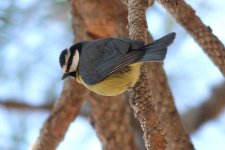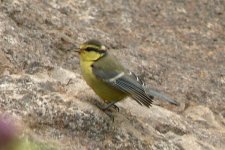http://www.mapress.com/zootaxa/2012/f/z03207p068f.pdf .
Author changed the name of two crickets based upon bad formation under 31.1.2. The article does not mention Incorrect latinisation nor 32.5.1.
31.1.3 The original spelling of a name formed under Articles 31.1.1 and 31.1.2 is to be preserved [Art. 32.2] unless it is incorrect [Arts. 32.3, 32.4]
For treatment of incorrect subsequent spellings of such species-group names see Articles 33.3 and 33.4. (Not applicable here?)
32.2. Correct original spelling. The original spelling of a name is the "correct original spelling", unless it is demonstrably incorrect as provided in Article 32.5.
32.3. Preservation of correct original spelling. The correct original spelling of a name is to be preserved unaltered, except where it is mandatory to change the suffix or the gender ending under Article 34 (for treatment of emendations and incorrect subsequent spellings see Articles 32.5, 33.2, 33.3, 33.4).
32.4 An original spelling is an "incorrect original spelling" if it must be corrected as required in Article 32.5.
32.5.1. If there is in the original publication itself, without recourse to any external source of information, clear evidence of an inadvertent error, such as a lapsus calami or a copyist's or printer's error, it must be corrected. Incorrect transliteration or latinization, or use of an inappropriate connecting vowel, are not to be considered inadvertent errors.
So under 32.5 the cricket name was not inadvertent? Because it was intentional?? But, Examples. If an author in proposing a new species-group name were to state that he or she was naming the species after Linnaeus, yet the name was published as ninnaei, it would be an incorrect original spelling to be corrected to linnaei. Enygmophyllum is not an incorrect original spelling (for example of Enigmatophyllum) solely on the grounds that it was incorrectly transliterated or latinized. In the cricket case the author said they were named after two females but he mis-latinized the name under the rules for gender ending??? Inadvertent? Or advertent and non-correctible? Was it mandatory to change the suffix or the gender ending under Article 34???
No. Article 34. Mandatory changes in spelling consequent upon changes in rank or combination.
But Species-group names. The ending of a Latin or latinized adjectival or participial species-group name must agree in gender with the generic name with which it is at any time combined {even at its creation?} [Art. 31.2]; if the gender ending is incorrect it must be changed accordingly…
So 34 does not apply to a new name that does not change rank or combination? Anyway it is a noun , If a species-group name is a noun in apposition its ending need not agree in gender with the generic name . And it is not mandatory under 32.5 if it is not mandatory the original name is correct.
Rational?? The purpose of 32.5 is that of repose. Or stability of names. If it is an obvious inadvertent error; fix it. Otherwise, leave it alone and give the consumers of animal names some peace.
“the name would appear to have been formed under 31.1.1, “
31.1.1 or 31.1.2 does an author have a choice? Hedwig is a German female given name. The name originates from Old High German Hadwig, Haduwig (hadu meaning battle, and wig meaning fight). So it is not an originally Latin name nor one that got Latinized by the culture. It is a modern name and should have been formed using only the rules of 31.1.2. ????????? Still not a reason for mandatory change.
http://www.nhm.ac.uk/hosted-sites/iczn/code/index.jsp?article=31&nfv= .
I am no authority i just like understanding rules and their application.







